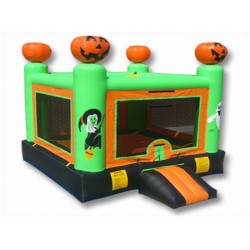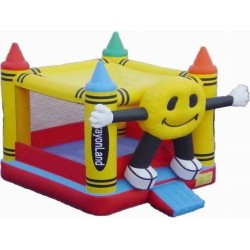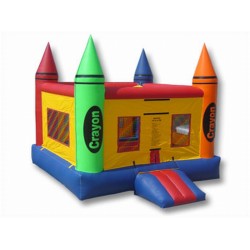How to avoid overheating in a bouncy castle during summer months?

Summertime in Canada is the perfect opportunity for outdoor fun, and bouncy castles are a favourite for kids’ parties and events. However, the summer heat can make bouncy castles uncomfortably hot, and even dangerous if proper precautions aren't taken. Here are some practical tips to help avoid overheating in a bouncy castle during those warm summer months.
Choose the Right Location
One of the simplest ways to prevent overheating is to set up the bouncy castle in a shaded area. Placing it under a large tree or using a canopy can help keep the temperature down and prevent the inflatable from becoming too hot. If shade is not available, consider setting up the bouncy castle early in the morning or late in the afternoon to avoid the peak heat of midday.
Use a Bouncy Castle Cover
Many bouncy castles come with covers or roofs that provide some level of shade. These covers can help reduce the amount of direct sunlight hitting the inflatable surface, which can make a big difference in keeping the temperature comfortable. If your bouncy castle doesn't have a built-in cover, you can use a large tarp to create shade over the area.
Encourage Frequent Breaks
It's important to encourage children to take regular breaks to avoid overheating. Make sure they step out of the bouncy castle every 15-20 minutes, especially during the hottest parts of the day. Provide a shaded area where they can rest and drink plenty of water to stay hydrated. This helps prevent exhaustion and keeps everyone safe.
Keep the Surface Cool
The surface of a bouncy castle can get very hot when exposed to direct sunlight, which can lead to burns on bare feet. To keep the surface cool, spray it down with cool water periodically. A gentle misting can help lower the temperature without making the bouncy castle too slippery. Just be cautious not to soak the inflatable, as too much water can make it unsafe for bouncing.
Monitor the Temperature
On particularly hot days, it's a good idea to check the temperature of the bouncy castle surface before allowing kids to play. Touch the surface with your hand—if it feels too hot, it’s best to wait until it cools down. You could also use an infrared thermometer to check the temperature more accurately and ensure it's safe for use.
Limit Use During Peak Heat
During the hottest part of the day, typically between 11 AM and 3 PM, the risk of overheating is highest. Consider limiting bouncy castle use during these hours to prevent heat-related issues. Instead, plan other activities that can be done in the shade or indoors during this time, and return to the bouncy castle when temperatures start to drop.
Important Safety Tips
- Always supervise the bouncy castle when in use, ensuring kids are taking breaks and staying hydrated.
- Keep a close eye on children for signs of heat exhaustion, such as dizziness, fatigue, or excessive sweating.
- Make sure participants wear socks to avoid burns from hot surfaces.
Conclusion
While bouncy castles are a fantastic source of summer fun, the heat can pose a challenge. By taking steps to provide shade, keeping the surface cool, and encouraging breaks, you can ensure that everyone enjoys the bouncy castle safely. Remember, a little extra planning can go a long way in preventing overheating and keeping the fun going all summer long.



